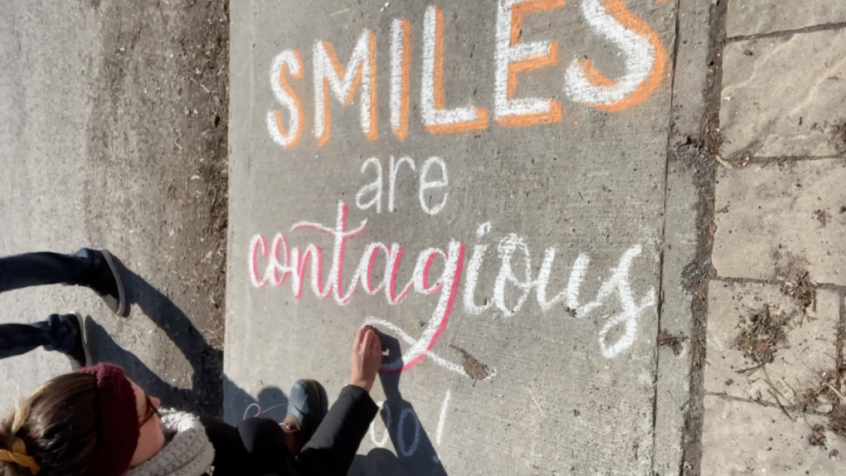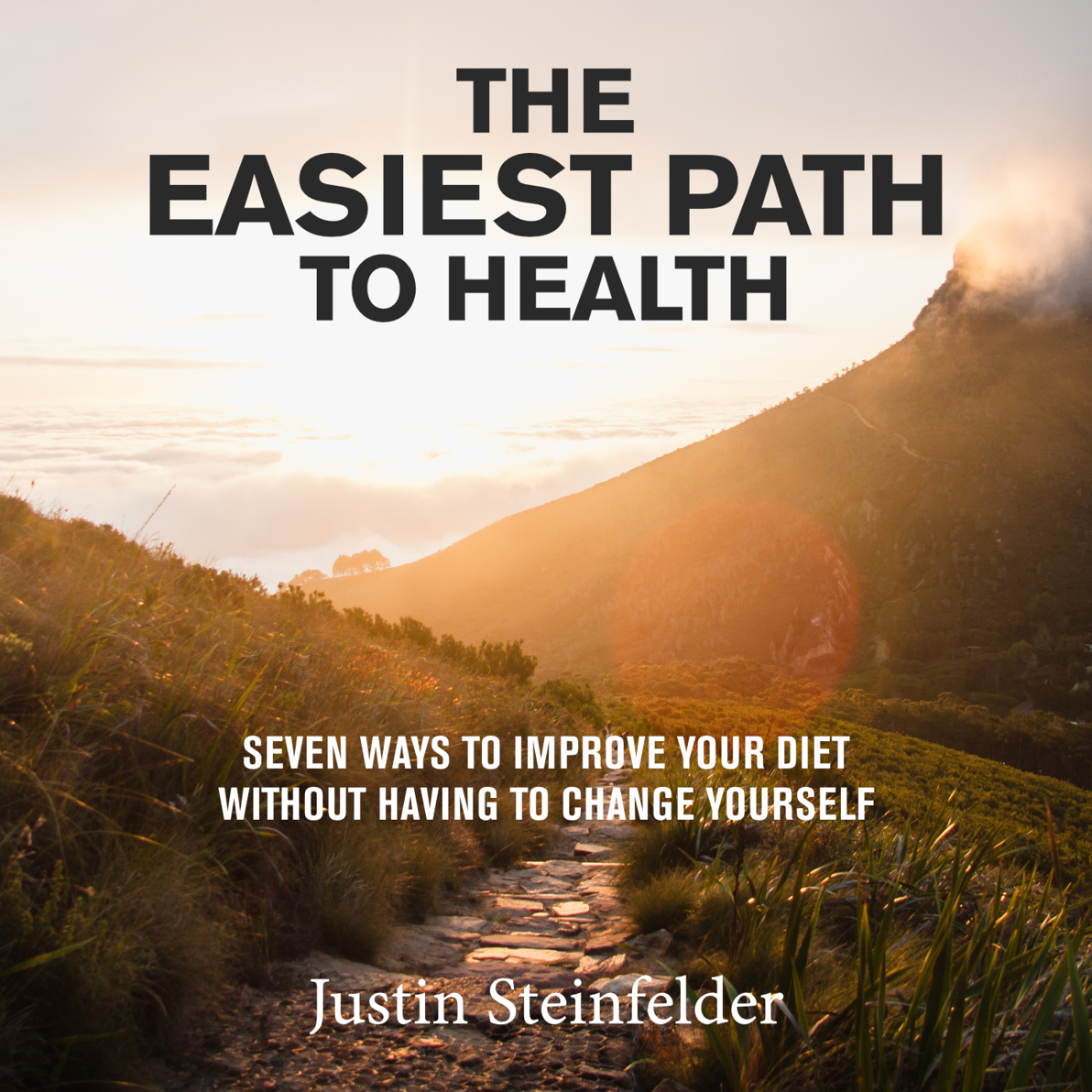My lovely, quarantined, in-terrible-need-of-a-haircut, readers–
This COVID pandemic has certainly been a little rough. And the “rough” is everywhere you look.
The news constantly updates us on the death total. Social feeds are filled with finger-pointing, anger, and contempt. Thoughts like “why didn’t we act sooner?” or “how will the economy ever recover?” are effortless. And all of these seem to serve as a spiraling negative feedback loop, one building relentlessly on the next.
But, there are other things happening than loneliness, lack of supplies, and infection. And these things are much more actionable. Much less egotistical and condemning. Much more hopeful, honest, and positive.
The downside to these more helpful sources is, of course— you actually have to search for them.
FOR THE FIRST WEEK OR TWO OF THIS THING, I was doing what many were doing— wondering how long I was going to let my hair grow out before attempting a self-buzz. Then, of course, came the concerns of when I was going to next be able to visit a coffee shop, the elliptical machine, or get a massage. You know, real problems.
Then, fortunately, I was awoken from my selfish slumber into contemplating a more helpful means of spending my time. After listening to a Tim Ferriss podcast called “How To Support Healthcare Workers Now,” I realized that there are actual problems here and that I could at the very least try to lend a hand.
The clinching line was when Ferriss, in an effort to mobilize help for at-risk healthcare workers on the frontlines (on whom we depend), said:
“Right now, if you are able, it. is the time to be a generous lifeguard, not a selfish drowning person. There are people who are drowning, there are people who really need assistance… Some of us are in positions to help. More of us are in positions to help than might realize that’s the case…Every small act goes a long way…Even just a thank you… while millions of people are working from home in safety, these people do not have that option.”
I realized at that point that I could at the very least aggregate a bunch of sources and recommendations on helpful, healthful, positive, creative, connected, productive to spend this time. That’s what I’ve made below.
To be clear— I am not suggesting we ignore the grim facts of the pandemic. Indeed, I’ve made a section that shows the best, most evidence-based sources that I can find to get informed. Some of them paint a tough 2020. That sucks, of course, but that’s the reality.
But what’s important then is what do I do as a result of that reality. And what you do.
And you should most certainly get a haircut.
THE BELOW LIST IS more or less in order of importance:
- Personal
Health
- For Your Body (Eating and Moving)
- For Your Mind-
- Connection / Relationships
- Help Others
- Learn and Create
- Work and Productivity
- Fun, Entertainment, Silliness, Humor
**Please give me feedback (steinfelder@thedilettante.org) or comment if you’ve found other great stuff and I will add it**
Personal Health
I list personal health (following COVID isolation and cleanliness, eating healthy, staying active, mentally sane, emotionally stable) first because the rest of the things (help and connect with others, learn new skills, be productive), are harder or impossible without personal health. It’s hard to volunteer to make PPE or learn the jazz flute when you’ve got zero energy, high blood pressure, and anxiety. Moreover, personal health is not only a shield but a sword. That is, eating healthy and taking regular walks will make you significantly better at everything from taking care of your kids to learning Japanese on Duolingo for 45 days straight…only to have your flight to Tokyo cancelled. Damn you, COVID!
Eat Healthy
“To keep the body in good health is a duty, otherwise we shall not be able to keep our mind strong and clear.”
Gautama Buddha
“The only way to keep your health is to eat what you don’t want, drink what you don’t like, and do what you’d rather not.”
Mark Twain
Elaine: “Veggie sandwich and a grapefruit– WHAT are you turning into?” Jerry: “A healthy person.”
Seinfeld
Nutritious Food = Stronger, Smarter, Less Anxious You. While eating healthy probably cannot help you avoid catching the virus (#stayingthefuckhome + washing your hands will do that), it probably will help you with the following: (1) Stronger Immune System (i.e. how you respond to the virus), (2) Smarter Brain, (3) Better Sleep, and (4) less depression.
What’s Actually Healthy? Well, here’s what most experts agree is probably a great start
I’ve read dozens of articles and talked to nearly one hundred people and here is what people are doing and saying about staying healthy during quarantine:
(1) Cooking Fresh Food “Low and Slow.”
Ever notice when you go to France or Italy, everyone is smoking and eating bread, cheese and pasta, but people are much thinner than, say, carb-terrified US of A? There’s a name for that—The French Paradox. One of the theories coinciding this apparent paradox is that the French (and Italian, and many traditional cultures around the world) cook meals slowly and eat with their families (rather than at a computer screen). Cooking “low and slow” is one of the staples.
@justdino23 and a few others have mentioned how the quarantine has given them the luxury of that Italian / French sensibility of ‘low and slow.’ That is, a “proper” and slower cooking of veggies and sauces, allowing for a better overall dish, and therefore more enjoyment of healthy, fresh foods.
(2) Track Your Eating.
Tracking your calories (or anything), though incredibly tedious, is well known to lessen your intake. It makes conscious what would otherwise be unconscious. Did I really eat 7 Walnut Chocolate Chip cookies?” Yea—ya did.
My friend, Joel in Maryland, prefers using MyFitnessPal, as do I. It’s what I used to track calories during my Meat Experiment as well as Veggie Muscles.
If you wanna be a real nerd, you can do what my buddy Geremy does in Chicago—track your calorie intake every day for like 18 years. Jeez, dude, get a life!
Don’t feel like opening an app? Taking pictures of what you eat (not with the idea of sharing them in IG but with the idea of “self-monitoring” them) has also been suggested to help curb eating.
(3) Easy, Healthy, Snacky, and Still Available To Order
Ok, I get it, sometimes you don’t feel like cooking “low and slow” or tracking what you eat. And yet, supermarkets are sold out, Amazon is delayed, but there are still simple, healthy options online. Here are some of my favorite brands:
- MUSH. ~300 Calorie, no-sugar-added, overnight oats. My fave is the dark chocolate.
- Seven Sundays. Actually healthy muesli, granola, and grain-free cereal
- Healthy Truth. This organic snack company is one of my faves. Probably the best dried mangos I’ve ever had. I also like the actually healthy pizza almonds.
- Sun & Swell. Great dry-roasted mix of nuts and seeds with no oil or sugar added. OR, for dessert, get the actually-healthy bites.
- Thunderbird. Actually healthy bars of fruits, veggies, cacao and spices. My personal faves are the pecan goji and the chocolate cherry almond.
- Rishi Tea. Health benefits of tea are staggering. Great sachets of tea all around. Green in the morning, hibiscus + tumeric-ginger in the evening.
- Matchaful. If green tea is good, Matcha is better. Why? It’s just the green tea leaf powdered and mixed with the water, rather than strained. If you haven’t had matcha, this is a good time to get a taste for it. Matchaful is a great brand, “farm-to-whisk” as they say.
- Minna Sparkling Tea. Sparkling water + actually healthy, no-sugar-added tea in adorable, colorful cans? Sign me up. Amazon will deliver basically on Prime schedj.
(4) “Become a Health Architect”
We’ve learned a lot over the last 20-30 years in terms of how what we surround ourselves with impacts what we do, whether or not we know it. The Harvard Grant Study (one of the longest studies of all time) showed this with respect to WHO you surround yourself with, but it also includes WHAT. That includes what FOOD you surround yourself with. i.e. do you have cookies on the counter, or cauliflower. Because whichever it is will influence your health.
RESOURCE: My e-book (audio version) the Easiest Path to Health is all about how to use what we know from behavioral science to shape your environment (in this case, your kitchen or bedroom) in such a way that “nudges” you to eat significantly healthier. The smartest companies in the world such as Google have used these tricks to exemplary success, nudging employees to eat 30% more fruits and veggies (and less unhealthy foods) in just days or weeks.
(5) A Little Experiment: “Breakfast Like a King, Lunch Like a Prince…”.
Remember how there was all of that stuff about breakfast being the most important meal? And then that link was seriously challenged by the intermittent fasting community who skip breakfast and lose weight?
Well, it turns out they were BOTH right and BOTH wrong at the same time. What we apparently want is to restrict eating windows (like the IF crowd suggests), but to do that on the early side, not the late side (like the Breakfast-Most-Important crowd said). So yes to breakfast, but not for the reasons they thought.
It turns out, because of a process related to hormonal response and your circadian rhythm, the same exact calories eaten in the evening versus in the morning, lead to more fat gain. Studies from the emerging science of “chronobiology” suggest that whether I eat a bowl of oatmeal or Oreos, if I eat that bowl for breakfast versus dinner, over time, I will be thinner than the other way around.
Usually the excuse not to eat an elaborate breakfast or lunch is because of work and the morning rush. Now that we’re home, we can lunch like those thinner Euros do. My cuz Scott has switched to a bigger lunch, smaller dinner and has loved the benefits:
“It breaks up the day and since I have food for two months, it stops me from eating too heavy before I go to bed.”
For more on this, the best evidence-based video I’ve seen: https://nutritionfacts.org/video/eat-more-calories-in-the-morning-than-the-evening/
Stay Active
“It is exercise alone that supports the spirits and keeps the mind in vigor.”
Cicero
“My favorite exercise is a cross between a lunge and a crunch. I call it ‘lunch.'”
Funny Internet Person
Why is exercise potentially more important on quarantine? Well, yes, it helps fight against those 16 trips you made to the kitchen. But there are other far more important reasons. Though usually thought of as a punishment you must trudge through to keep weight off and perhaps stave off a heart attack in 30 years, it has much more immediate, much more relevant impact. Those include: (1) smarter brain, (2) better sleep, (3) less anxiety / depressive feelings, (4) more motivation.
Of course, the gym is closed and we can’t congregate in public places. Here are ways people are solving that problem listed in order of gadgets or reading necessary:
(1) Walk / Jog/ Run Outside.
Duh.
Ok, we know running is exercise, but did you realize how effective just walking fast or slow, low-impact jogging can be?
But, especially if you’re going to run, don’t overdo it. If you’re not a runner (i.e. used to running), you’ll need to take days of rest in between to absorb the new stress on your knees / feet / lower back, etc. This obv doesn’t apply as much to walking.
(2) Non-Exercise Activity Thermogenesis (NEAT).
Some recent research has noted that NEAT— the movement / activity used when you’re not formally exercising— could be a major contributing factor in the difference between weight gain and maintenance or loss. Given that car commuting is down and you don’t have to be at your desk (at least in April) this is a great opportunity to increase your NEAT.
German researchers suggest a goal of adding up to 2.5 hours of standing or walking / moving time to your day. That may be ambitious, but you can get there by fitting in a couple more 10-30 minute walks per day, and spending at least 1 hour of your work day standing.
(3) 15-30 Minute Workout (No Equipment).
Great, simple, effective vid by John Romaniello on Arnold’s website. Just 6 exercises.
- Squat (5-20)
- Push up (5 – 25)
- Plank (15 – 45 seconds)
- Jumping Jacks (15-30)
- Reverse Single-Leg Lunge (5 each leg – 10 each leg)
- Glute Bridge (5-10)
REPEAT 4 times. Take 2 minute break.
**If you want to add weight, but you don’t have any formal equipment, do what my buddy and ex-Duke football star, Cameron, does and fill a backpack up with some books. Hey, it’s not like you’re reading that copy of The Illiad anyway.**
(4) Digital Workouts: Workout Apps, Digital Training, YouTube, Social Media Live
A number of apps have been thrown around as being very good (and temporarily free), but it probably will take a bit of experimentation. The good things are (1) they are free and (2) this kind of behind-closed-doors experimentation versus, say, going to your first, live hot yoga class in Venice Beach, is that you won’t completely embarrass yourself in front of anyone other than those whom already know you’re a dunce.
This list is far from comprehensive, but it is name-brand heavy, so at the very least, you’ll become cooler (or, just google, “free workout COVID”):
- Orange Theory
- CorePower (harder yoga)
- Down Dog (easier yoga)
- Daily Burn
**Btw—these are not just working for “class people.” People across the board have appreciated this interleave from their normal workout schedule, from 6’6” ex-NFL players to people who almost never workout**
- Zoom / Facetime Trainers. This has been recommended by lots of people. It’s usually (a) cheaper and (b) very possible with or without your own equipment.
- Social Media Workouts. Many trainers, movement specialists are putting workout videos on their social platforms 100% free. My favorite for simplicity + effectiveness is The 12 Minute Athlete (who helped me get my Veggie Muscles).
- Join a Fitness Challenge Community. Under Armor has a decent one (thanks, Jame). Might be better / more personal to start one amongst a few friends)
- Dance Workouts. Here’s Kelly Ripa’s favorite (whatever that means).
(5) Books and Articles on Equipment-Free Fitness
- The 12 Minute Athlete. I talk about it here. Great trainer, great writer, great book for practical, no B.S., no-equipment-necessary workouts. Helped me gain 5 lbs of muscle in 60 days on an all-plant, no-weights, no-protein-shakes experiment.
- Ben Greenfield’s starter book is a great one.
- Marina Koren of the Atlantic wrote this solid piece.
(6) Gadets.
- Trampoline. Did someone say, trampoline? My friend and author, Mark Gober (San Francisco) swears by this Bellicon Rebounder.
- Kettle Bell. Fancy yourself above the lowly trampoline, do you? Get thee a kettlebell. Ex-Collegiate JMU and Cross-Fitter, Shawn Setcavage have noted its being more than adequate. Sure he’s way over the hill now (and a mostly plant-based sellout), but he’s got a lot of stress to burn off (hey, he’s married to my sister). If it’s good enough for that beast-of-a-man, it’s good enough for you.
- Doorway Pull-Up Bar. Here’s the one that I got. Pretty solid.
- Workout Gadgets If You Happen To Be Rich AF: Peleton bike (just $2400!)
Stay Sane (Mental / Spiritual / Emotional Health)
“If we start being honest about our pain, our anger, and our shortcomings instead of pretending they don’t exist, then maybe we’ll leave the world a better place than we found it.”
Russel Wilson, NFL Quarterback
“We cannot be more sensitive to pleasure without being more sensitive to pain”
Alan Watts
“I told my psychiatrist that everyone hates me. He said I was being ridiculous – everyone hasn’t met me yet.”
Rodney Dangerfield
Between apocalyptic media, the tanking stock market, the kids wanting to play “horsey”, and a shitstorm at work, you may find yourself losing it. I’m being light here, but mental health, especially in these situations, are a serious problem. And even worse than the above could be isolation. I’m obviously no doctor, but the below are what people around the net (and I) have found most helpful.
(1) See: “Eat Healthy”
(2) See “Stay Active”
(3) Sleep Well
This video from Berkley Neuroscientist, Matt Walker (author of “Why We Sleep”) will give you a primer. A couple tips from Walker’s book (more here) to improve sleep:
- Get up at the same time each day (i.e. even though you’re not going to the office, keep at the normal wakeup).
- Avoid exposure to blue light (e.g. iphone, ipad, laptop, LED TV) within 2 hours of bed
- Get exposure to bright light (especially in the morning. See: “#4 Get Morning Light”)
- Avoid Alcohol / THC in the evening
- Avoid caffeine after 12pm
- Exercise
- Eat Healthy
(4) Get Morning Light.
A friend recently told me: “the first few days I wasn’t getting outside until the afternoon. It wasn’t until about a week in that I realized– OK, this is not good.”
You may find that you’re not going outside or seeing daylight much since you’re not going to work. This is not a good idea.
Natural light exposure in the morning is linked to basically everything healthier: hormonal production, sleep, eating healthier, mood, etc. Get outside, early.
That same friend: “so now I’m taking walks in the morning. It’s actually really nice.”
(4) Mindfulness
Sitting Meditation. The idea of meditation is to bring to awareness our tendency to, unintentionally, get lost in thought rather than being in the present moment. That tendency has been linked to increased levels of anxiety, depression, lack of control, etc. To help with this, one tactic is sitting meditation which involves focusing on an “anchor,” typically the breath or some sort of repeated phrase, and just simply noticing what happens (including the tendency to get caught in thought). Here are some ways to learn:
- Apps: Headspace, Calm, Waking Up
- Live Meditations:
- Mondays: Jack Kornfeld (founder of Spirit Rock) 7pm PST
- Tuesdays: Celeste Young (2:30pm PST)
- Fridays: Erin Doppelt, a Chicago-Based Psychologist (TY Bass fam)
- It’s at 11:30 AM CT, follow @ErinRDoppelt
- All Days: Insight LA Online
- Introduction to Mediation. If you’re new to this world, besides the apps above, you can check out this intro course from Dina Kaplan and The Path (NYC-based mindfulness ‘sangha’).
Walking Meditation. Similar to sitting, walking uses the feet or body moveemnts as the anchor. Just focus on the contact with the ground, notice what happens, keep returning to the feeling of your feet on the ground when you inevitably wander off in thought.
- Headspace. Great walking mediation exercise
Working Mediation. When you’re on a meditation retreat, you are assigned a menial task to do. At first, the task seems boring and even dreadful, but by the second or third day in, you realize there’s actually quite a lot of solace and enjoyment you can get from washing dishes, or cleaning a bathroom. You pay attention to the details, you meditation on how you feel. I’ve never been so sad to stop cleaning dirty rubber mats from a kitchen in my life.
Take your time with dishes, listen to some music, pay attention
(5) Deep Breathing.
Deep breathing is exactly what it sounds like, deep breaths, often focused on slowly breathing out (make your lips into a circle, as though around a straw) to activate your “parasympathetic” nervous system. This can also improve your “heart rate variability” which is a marker for health. A number of people have recommended sourced:
- The Breathing App. From Fitness Expert, Krista Stryker: “set to 4:4 box breathing. Really useful.”
- From my editor, Fred (Minneapolis): this video
(6) E-Therapy
Design expert, Debbie Milman has said that therapy has been the key to her success, as many have. I just started therapy about two years ago and I’m very glad I did (as are, I assume, many who know me). Luckily, my therapist has offered do remote, FaceTime / Zoom sessions. So you can do that or you can check out BetterHelp (ty to Josh in LA) which might be more economical.
(7) Follow #peacechallenge.
I’ll list this under the “Light and Positive and Fun” section at the bottom as well. Some great music, mindfulness, etc. Just follow.
(8) Take Advice From Those Who Have Overcome It
Here’s what Great Dresh comedian, Gary Gulman advises about getting through tough times in isolation.
(9) SEE: “How To Stay Light and Positive and Silly and Have Fun” section below
COVID for Kids
“If you want your children to be intelligent, read them fairy tales. If you want them to be more intelligent, read them more fairy tales.”
Albert Einstein
“Grown-ups never understand anything by themselves, and it is tiresome for children to be always and forever explaining things to them”
Antoine de Saint-Exupéry, The Little Prince
“Kids are ascared of the park”
Marv, Home Alone 2
(1) “Secret Bedtime Readers.”
This is creative and great from the Hamilton fam (aka HamFam) in Hoboken, NJ (aka HoJoken):
“Each night before bedtime, we FaceTime a different “Mystery Guest” and they read a story or two. It’s been great to keep things fresh/fun for the girls, and also seems to be something people enjoy doing. Smiles all around.”
(2) Creative Games
“I know a great sand guy” my sister being serious, not quoting Beanie Campbell from Old School
- Garage Sand Box. Ok, she didn’t say that, but she did buy about 50 lbs of sand, filled up to plastic containers (like those you might store shoes in), got some cups, and boom, you have sand playing in the garage.
- Water beads. “you just put these puppies in some water and kids go nuts.” OK, that’s also a made-up quote.
- Rock Painting. Step 1: Collect or buy rocks. Step 2: buy paint. Step 3: paint the rocks. Pretty easy. Now you’ve got a rock collection.
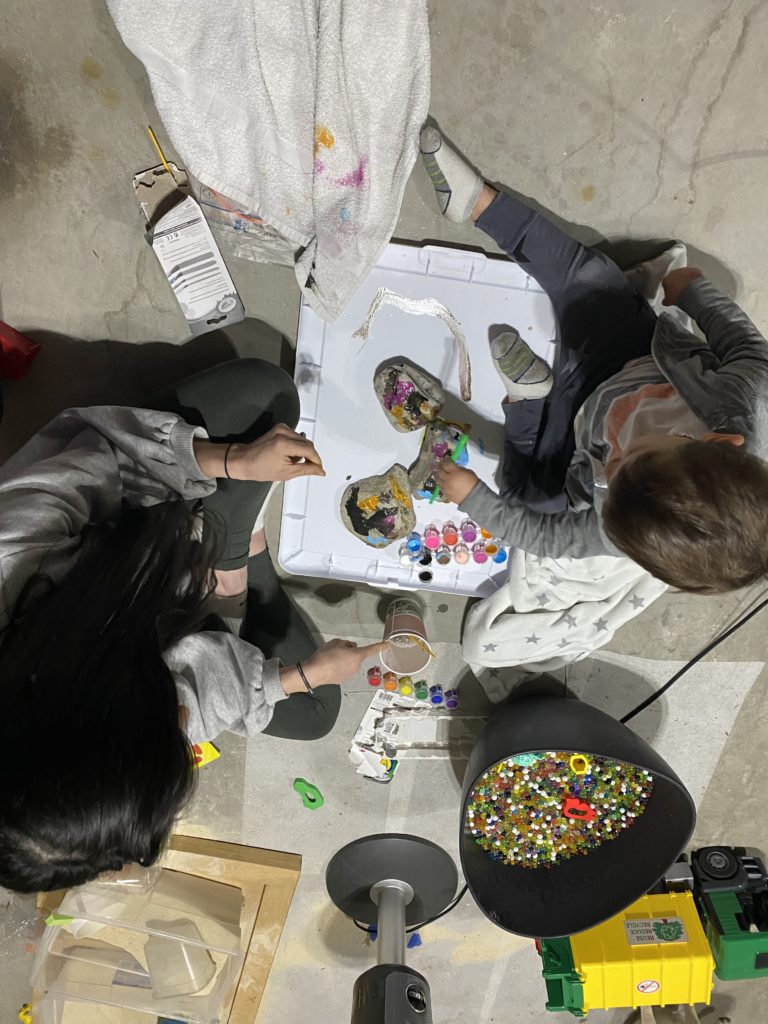
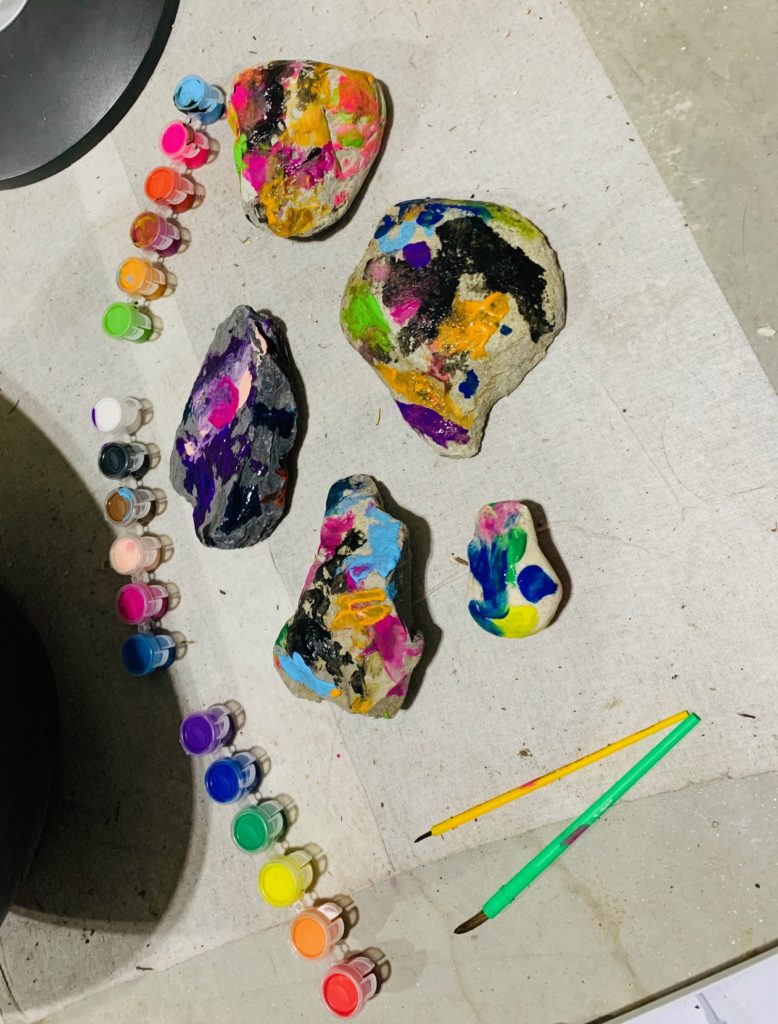
(3) Goals and Lists for Kids.
From my friends Mike and Erin from Baltimore:
“Best thing we’ve (Erin) has done was creating a daily list for Max to accomplish with some small carrot at the end of it. They review it every night before shower / bedtime (helps with reading). It’s a mix of educational and physical activities that he gets needs to do, and actually gets excited about and has made sure he does daily. Here’s an example:”
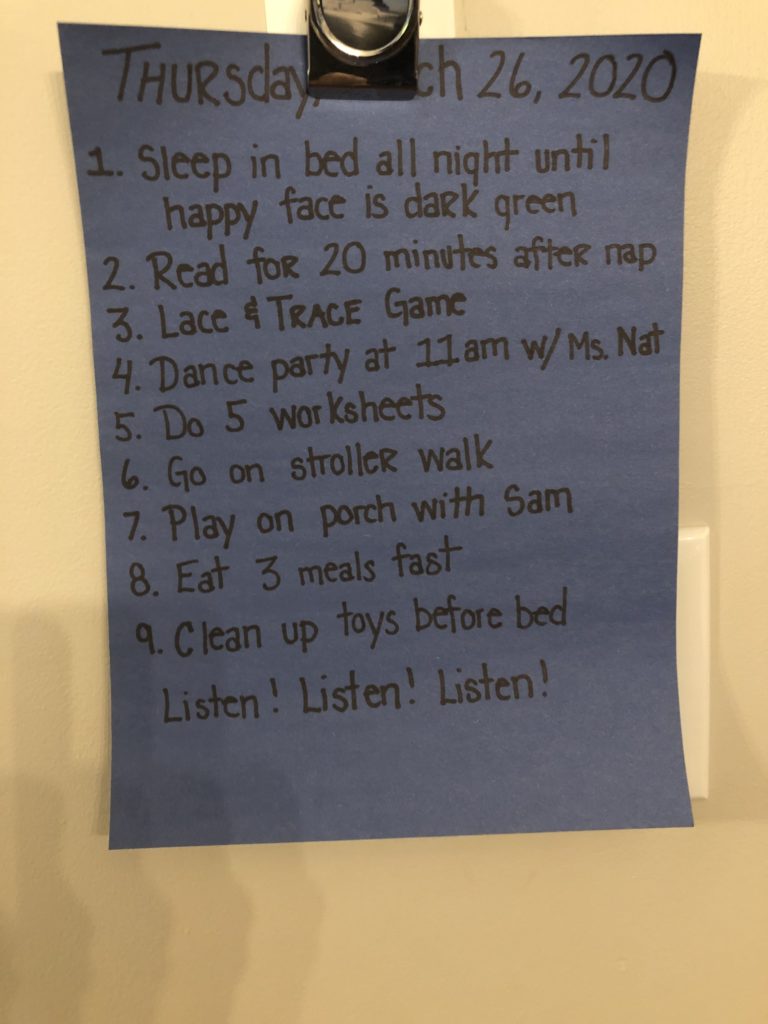
How To Stay Connected
Remember that speech in Armageddon by the President right before they go into space to head-off the astroid? One of the better movie speeches of all time ( this one is obv #1). But “for the first time in the history of the planet, a species has the technology to prevent its own extinction.”
I was thinking about that quote last night as it applies right now.
Plagues, viruses, epidemics are not new to the world. The Bubonic Plague (~1300 AD), for instance, killed around 100 Million people in Europe and Asia. At the time, that was 25% of the wold’s population! The funny thing is, it actually still exists, it’s just that within the last 100 years we’ve developed defenses against it (antibiotics, in this case) and rarely would someone die.
But only within the last 10 years have we developed another technology that makes it much easier to survive an isolating virus like COVID– digital calling. This technology allows us to connect with others, even when we are physically isolated.
How important is frequent social connection? Some research has estimated a 50%(!) increase in longevity.
Here are some of the ways people are staying connected:
(1) Hangouts / Zooms / Facetimes / Skypes.
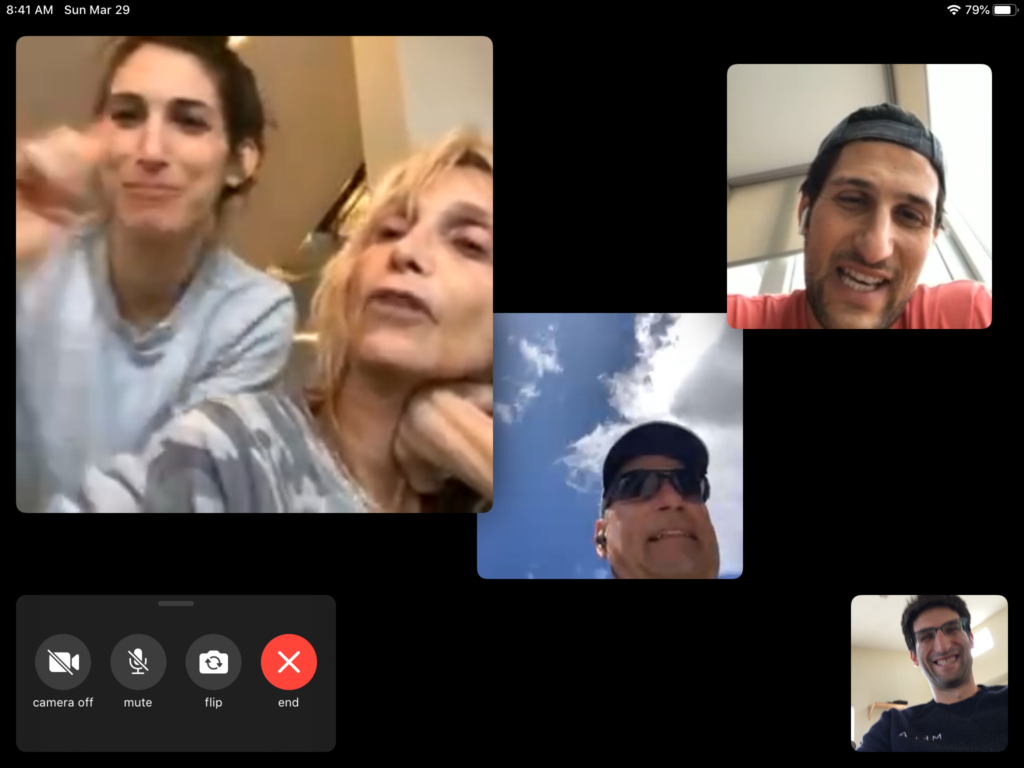
(Are people still using Skype?)
These come in all shapes and sizes. People use them for the following:
- Group Happy Hours
- Digital Lunches and Dinners (nod– @JordanGoldberg)
- Cook-Offs (cook the same things, see what everyone ends up with)
- Family FaceTimes
(2) Group Game Apps.
- Psych! (thanks to Evan in Philly). Game created by the “HeadsUp!” people. Good for groups.
- Houseparty—group game-playing app (TY Jeff and Jasmine)
- Game Center
- Wisecrack app
- Pokerrrr 2 app (TY, Scott)
(3) Change Your Background.
- On Zoom, you can select any background you want, with no app (from Evan Brandoff of Leagueside fame).
- For Google Hangouts, my buddy Geremy (the nerd who tracks his red-meat and alcohol intake) has actually purchased a portable green screen (like he’s fucking Kurt Loder) and downloaded this app to have pics from around the world such as the below.
(4) Digital Dating.
When I first got the idea of a Facetime first date a couple weeks ago, my friend Mike Traber (Baltimore) had only one question for me: “really? What are you going to put in your background?!” (The answer turned out to be a white wall).
Side-note: my dates have become considerably cheaper.
(5) See Music in “How to Stay Entertained.”
Many have found, especially if living alone, that playing a little Bose or Sonos distributed music in the background can make your home / apt a little less lonely.
(6) See “Reading.”
As Hemingway said, “There is no friend as loyal as a book.”
How to Help
(1) How To Help The Many
Organized, Massive, Inspiring Thank Yous.
Here’s a particularly inspiring video from Atlanta. Better yet, this has happened all over the globe.
Donate Money
- Listen to this @timferriss podcast (~18 min) on what you can do to help.
- This includes donating to Flexport.org who handles logistics of medical equipment.
- Greg M (Los Angeles) and others have donated to a First Responders fund on gofundme.
- Others have donated to the global humanitarian group Direct Relief, who is delivering things like medical equipment to those on the front lines.
- Another fund a friend sent, https://supplyourheroes.com/
Donate Time, Effort, and Skill
- Volunteer for Meals on Wheels. MOW delivers meals to the elderly. It’s likely that your city has an iteration of it (for instance, in NYC it is City Meals on Wheels). You can volunteer to deliver these meals.
- Donate Blood. I know, it’s a little eerie. But it is especially helpful now, particularly b/c people are not leaving their homes.
- Repurpose Your Company. A friend is the COO at Nations Photo Lab. They repurposed their assembly lines to make Personal Protective Equipment (PPE) for medical professionals. Perhaps your business can help.
- ** Your Company may already being doing this. My cousin works for Under Armor and is volunteering her time with them to help make medical equipment. Perhaps your company has a means to lend a hand.**
- If You’re a Techie, Help The Government. My friend, Connie, in San Francisco sent this website where, in their words: “We are a volunteer-run, non-partisan effort to help federal, state, and local government with technology, data, design, operations, communications, project management, and other needs during the COVID-19 crisis. We provide free assistance to all government entities across the country; if we can help, we will.”
- Create a Fund For Those Being Especially Hurt By The Shutdown. Connie also pointed to this awesome fund called Safety Net Fund created by Josh Goldbard and Inga Bard to provide grants to artists who support themselves on the income from, e.g. live shows.
- Create an Emoji? Yup, there’s even been a campaign to create a hand-washing emoji.
Want more ways to help the many? Here’s a list.
(2) How To Help the Few and Near
Saying “Thank You” (TY, Marnzee):
- To healthcare workers. Here’s a few vidoes of entire neighborhoods / cities applauding healthcare workers during a shift change in: Atlanta, Spain, Italy.
- To Delivery Services. These people are getting you food, tools, cleaning products. Say thanks, ask them how they are feeling.
- To Supermarket Employees. These people are business as usual—except it isn’t. It’s much harder to get to work, to stand out there in the midst of a spreading virus, wearing masks and gloves. Ask them how they are. Thank them.
Send someone a COVID Care package.
This can include:
- Snacks
- Gift cards (maybe for adorable, crucial home goods)
- Hand-written notes
- Joke gifts
Donate or Purchase
- To neighborhood businesses either by straight up donation, or by purchasing from them (thanks, Cal Swoff (Denver)
- In SF, a group created a fund called Save Our Faves to support local restaurants.
How to Learn and Stay Creative
“The more that you read, the more things you will know. The more that you learn, the more places you’ll go.”
Dr. Seuss
“Man’s mind, once stretched by a new idea, never regains its original dimensions.”
Oliver Wendell Holmes
I am not young enough to know everything.
Oscar Wilde
(1) Study A Topic That Always Sounded Cool, But You Haven’t Made Time For
This might be Jazz or Classical Music. Maybe it’s impressionist art. Maybe it’s WWII. Maybe it’s how to beat Zelda. Maybe it’s learning a new dance that you’ve wanted to know (The Dougie?)
To help with this there are some great online “Massive Open Online Courses” (MOOC) platforms—my three favorite overall:
- Coursera
- Masterclass
- Udemy
(2) Read
Books. Many people have said they are using this time to read those books on the shelf they bought but never read— e.g. Infinite Jest, War and Peace, Atlas Shrugged, Moby Dick, The Hunger Games—you know, all the greats.
Here are my favorite books from my 34th Year. 33rd Year. 32nd Year.
Great Blogs. If you don’t want to pick up that dusty book, my absolute favorite website for learning / creativity / hope is branpickings.org. Another is Seth Godin’s daily blog.
Free reading. The App SCRIBD is offering a month free of books (including audio) and other publications (TY, Dino, @justdino23)
(3) Weird Creative Experiments.
Music. My friend Andrew has started arranging music for some of his favorite poems. They’re very good.
Writing. My friend Matt (creator of The Exit Interviews, among other things) started an email chain where he writes one creative, silly, but insightful piece weekly. Last week he wrote a hilarious, adorable piece from the perspective of the virus. Here’s an excerpt:
“Both the human and the virus community are all feeling a bit overwhelmed at the moment, and we, at virus HQ, wanted to share our perspective and try to clear the air. We got off to a ROUGH start, and I speak on behalf of the entire microscopic universe to say that this was as unexpected on our end as it was on yours.
First and foremost, and we can’t stress this enough, we don’t want to hurt you! One minute we’re living quiet little lives in an absent corner of a forgotten dimension of the universe, and in the next we’re transported out of our normal domain and sucked into a delicacy none of us had ever seen before. Your respiratory epithelium to be precise. We just love it. Eat it up. Moths to a light bulb. Man to apple pie. It’s irresistible to us, and it seems as though we can’t stop ourselves from going after it.”
Learn to Bake. Many have told me something like the following: “I’ve never usually bake, but I am experimenting with: e.g. pizza, apple crisp, cake, cookies, etc.”
- Why not bake some avocado brownies (Thanks to Cali from Denver)
- How about a “healthy” apple crisp (@cousin jamels)
Interior Design. My friends Geremy and Vicki are “Designing an art gallery wall with unhung pieces in the closet”
Nail Painting. A girl I’ve been going steady with (digitally) (i.e., we’ve been on two digital dates) has been taking this time to try different nail polish colors to see how she feels about them. She’s doing the same with outfits and other fashion items I know little about. Sounded fun to me.
(4) Pick Up A New Skill.
My friend and writing teacher, Spencer, suggests doing this in a rather systematic way to make sure he learns it. Here’s Spencer:
“Start a new hobby with a friend. Pick something you can practice individually, then hop on a video call once a week to share your progress. Great way to both learn a new skill and stay socially connected. I’m doing this with a couple different friends.”
Some skills he’s working on:
- Learn How To Pick a Lock.
Did you know that Nobel Physicist Richard Feynman was an avid safe-cracker? It was an odd skill he picked up. My friend Spencer is looking to follow in step:
“Very low-effort, which is perfect if you’re beat at the end of a long work day. Start with a clear lock to learn how pin-and-tumbler systems work. Then just put on The Office, sit back on your couch, and fiddle with an easy beginner lock until you can get it open. Here’s a lockpicking tool set. Get into it with a friend — pick progressively harder locks each week, then share your progress. By the way, you’ll quickly learn that 90% of the locks people use are completely useless. I can pick my front door lock in under 10 seconds, and I’m still very much a beginner.”
- Breadmaking.
Pick up a copy of Tartine, some bread flour and whole wheat flour, and a few basic tools. A week after your stuff arrives, you’ll be pulling your first sourdough loaf from the oven.
Create a vision board.
Vision Boards are visual, image-rich depictions (think magazine pics / words / print outs) of the life to which you aspire and (crucially) believe you can have. Basically, a visual depiction of your goals. Unfortunately, Vision Boards are mixed in with the “Law of Attraction” which, in and of itself isn’t bad, but happens to attract a lot of what you might call: “woo woo stuff.” That makes for hard-to-watch videos. Here’s a not totally intolerable primer. (@Jeff&Jazz)
Start a Mini Garden.
A friend pointed to this article for in-home or on-balcony “gardens”
How to Stay Adequately (Though Not Overly) Informed
““I do not take a single newspaper, nor read one a month, and I feel myself infinitely the happier for it.”
Thomas Jefferson
“the man who never looks into a newspaper is better informed than he who reads them; inasmuch as he who knows nothing is nearer to truth than he whose mind is filled with falsehoods & errors. He who reads nothing will still learn the great facts, and the details are all false.”
Thomas Jefferson
Of course, we want to stay informed, but I think we all understand Jefferson’s point. The point is not to get so into the news that you risk mental health. (See: How To Stay Sane). A good article out of the University of California on this.
Here are some of the best, evidence-based sources I have seen:
(1) Bill Gates
Gates has been studying global epidemics since 2008 when he went full-time into the Bill and Melinda Gates Foundation and pledged to fight the world major problems: disease, poverty, climate change, etc. On COVID specifically, he not only pledged $100 Million dollars to fighting / containing it, but also warned against the threat years ago.
Here’s a great list of answers to various COVID questions (TY Jordan Steinfelder) and a 30 minute clip from CNN’s Town Hall (TY, Barry Steinfelder, CNN’s #1 Viewer).
(2) For the Data-Driven.
My friend Scott turned me onto this resource. Scott’s a data guy. I’d make the joke that guys who like data tend to not go on that many date-as, but he’s happily married and I’m still single…
(3) For The Visually-Oriented.
Thanks to Jason Selinger (a Director at UCSF Hospital) for turning me onto this visual map from Johns Hopkins tracking confirmed cases. Just don’t look at this thing for too long.
Additionally, here are several graphs by the Institute for Health Metrics and Evaluation. Of course, this is a moving target, so these models are just an approximation given what we know now. (Also from Jason).
(4) For the Video-Oriented.
Dr. Anthony Faucii, Director of National Institute of Allergy and Infectious Disease. Here’s one vid, but there are tons.
Cornell Doc in NYC. This video (recommended by my man, Matt D from LA) answers a bunch of questions from a doctor in heart of it right now, NYC.
(5) What Is ACTUALLY WORKING.
Solutions-Based Journalism on COVID. This is a GREAT resource for finding not just the complaints or world-is-ending perspectives in most news outlets but more of what people are doing and what is working.
(6) Dr. David Katz, Former Director, Yale-Griffin Research Prevention Center.
In my view, one of the most level-headed people in the Public Health sphere. A good way to read what he is writing and reading. Here are Videos.
(7) If You Own A Small Business.
See if you qualify for relief from the stimulus. Or here. (TY to Greg M from LA for pointing that out).
How to Stay Productive At Home
“It is well to be up before daybreak, for such habits contribute to health, wealth and wisdom”
Aristotle
“Never mistake motion for action”
Ernest Hemingway
George: Right now I sit around pretending to be busy
Jerry: How do you pull that off?
George: I always look annoyed
Seinfeld
(1) Create a Space.
I’d say that at least 80% of the people who work from home regularly, and most of the articles that talk about how to work from home effectively, advise to create a space for work. It doesn’t need to be elaborate, it seems, just clearly defined.
My friend Scott in NYC was one:
“I arranged the computer at the windowsill so I can finally have an office with a view”
SIDE NOTE: This is the same “environment” behavioral logic on which my ebook is based.
(2) Music.
One way to do this is to create sound constancy with Music. Many have endorsed Brain.fm as a great solution.
(3) Make a Schedule.
One hard adjustment is not having the regular rhythms of the day at home that work usually dictates. That causes people like my friend and sports broadcaster, Yianni (@yian) to say things like:
“Is anyone else eating lunch at absurd times like 11:15 am?!”
In the morning, it may help to create a schedule, including meals, and stick to it. In order to stick to it, it helps if you (a) write it down and (b) tell everyone else in your house about it. If there’s no one in your house, sign up for things related to the activity—such as online workouts, or make a digital dinner / lunch date with a friend.
(4) Make An Actually Useful and Prioritized List.
Here’s my friend Mike:
“I’ve devised a more organized task list that helps me plan out and prioritize all that I want to through the week. At the top of every days page is “EMS” representing what I need to do to support Erin (wife) and the boys. Following that is “MITOTD” which is shorthand for “most important task of the day.” As the name suggests, I want to write out and make sure I’m accomplishing this one thing.
Then underneath that he writes out the various, and perhaps urgent, but less important things for the day to check off and separates them into categories.
“Using this as a self-management tool helps me avoid anxiety of having ‘so much to do’ in a new environment where we have limitless things to accomplish amidst more time on the phone than ever. I get some catharsis by progressing through it and it keeps me honest with myself when measuring my own productivity and impact.”
Well said, Mike.
(5) Deep Work.
Most people I talked to about working from home stress the important of having blocks of “sprinting” time for work. So maybe it’s a 90 minute period of Cal Newport-ish deep, focused attention on one big task.
(6) Remember To Turn it Off.
The corollary to deep times are shallow times. You can’t always be sprinting.
When you’re not working, be with your family, or food, or learning, or outside for a walk. If you mix them, it lessens the effectiveness of both time. It helps to have a cut-off time at the end of the day.
From my friend Pierce in Denver:
“I have been turning off, packing everything up, and putting it all away into a corner. This has been helpful to disconnect from work rather than having that feeling of always being connected. “
(7) Know What’s Mandatory v. What’s Flexible
A great perspective on Q productivity by my very smart, very tall friend, Cameron:
“The number one item for me… is to determine what parts of the routine are mandatory vs. flexible.” In terms of mandatory, “for me that is exercise, important work blocks where I am zoned in on projects, and of course more of the fun non-negotiables like the walks with Nora and Lennon (his one year old daughter) and bath time….”
Cam went on to describe how the flexibility of this Q is the ability to spend much more time with his wife and baby.
How To Stay Light and Positive and Silly and Have Fun
“The only way to cope with something deadly serious is to try to treat it a little lightly.”
Madeleine L’Engle, A Wrinkle In Time
“They say the seeds of what we will do are in all of us, but it always seemed to me that in those who make jokes in life the seeds are covered with better soil and with a higher grade of manure.”
Ernest Hemingway, A Moveable Feast
“It is well known that humor, more than anything else in the human make-up, can afford an aloofness and an ability to rise above any situation, even if only for a few seconds.”
Viktor Frankl, Man’s Search for Meaning
(1) Notice (And Write Down) Good Things.
Many have stressed the importance of focusing on the good. This is not a strategy that says—“there’s nothing bad, it’s all positive.” It just chooses to focus mostly on the good things and recognize that which we can and cannot control. For instance, traffic and pollution are way down.
From my friend Mark in NYC:
“I’ve been keeping a list of all the things that I like better about sheltering in place (doing kids math homework with them, only wearing sweat pants, etc.) that I write on a poster and hang up in the living room so can see it every day.”
(2) Watching / Listening to / Reading Something Positive.
Perspective Piece. I thought NYMAg article was a nice perspective by writer Andrew Sullivan (thanks to Professor Gary Pavela for pointing to it).
Podcast. Many, including Fitness expert, Krista Stryker, and Golf expert, my brother Jordy (Bethesda, MD), like Ryan Holiday’s Daily Stoic Podcast. Very short. Very helpful.
Poetry. My editor, Fred (Minneapolis), has a nice reserve of poems on his uplifting newsletter Seven Good Things. Here’s one from Maya Angelou.
Zoo and Aquarium Live Streams. My friend Connie in SF composed a list of all. the coolest live streams of zoos and aquariums. Pretty sweet.
(3) Music
Free Live Stream. My friend and artist Maggie Rose has done some great live streams, including recently playing for the healthcare workers at Vanderbilt. #gratitunes
#LiveFromHome. Follow this on IG. Really great.
Adam Levine Singing “Your Eyes” on Stern. Here. Hubba.
More Music:
- My friend Josh Teitelbaum and Family Company have been making some good stuff remotely @familycompanymusic
- As has Jeff Goldford (@jgoldford). #quarantunes
(4) Interior Design
- Rearrange rooms in your house (Jasmine in Los Angeles)
- Create a wall of photos (Bass Fam– Chicago)
(5) Draw and Color.
Adult Coloring books. These have have been a big hit (TY Jasmine and Mom). However, I don’t see the distinction from kid’s coloring books. I’m pretty sure they just call them “adult” so that the “adults” can feel better.
Chalk on the Sidewalk. Like this amazing rendition (below) by my very Canadian friend, Becca (The Happier Ever Crafter).

***Don’t worry—you don’t have to be this good to do this***
(6) Must-See Movies and Shows.
The Tiger King has been mentioned a lot.
** Truth be told, I am kinda ignorant. on this front, so if anyone wants to offer up a list—-please help**
(7) Ok, Fine, Alcohol.
And yet again, I’m ignorant. I’m a total square when. itcomes to alcohol, but some (my friend Pierce aka AirSwoff) have recommended wine.com and / or vervewine.com as being helpful to switch things up
(8) COVID Humor
Aahhnold. If you haven’t been following Arnold and his collection of odd animals, please do.
Seinfeld Script: “The Quarantine.” Someone actually wrote this.
Bane. I found this humorous:
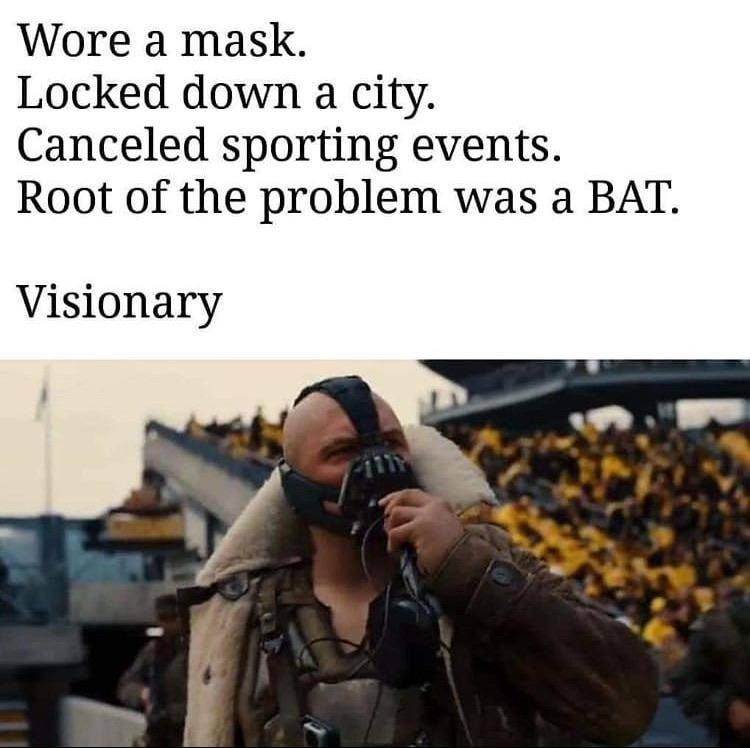
Political Cartoons. You’ve probably heard a lot of people be “experts” about the disease despite the lack of, let’s say, science knowledge. Here’s a funny cartoon on that (credit: Joel in MD)
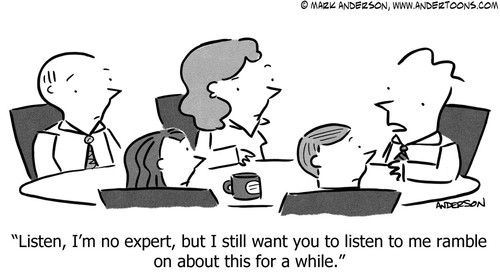
EPILOUGUE
““I wish I could recommend the experience of not being killed to everyone,” the essayist, Tim Kreider, wrote in his provacative essay, We Learn Nothing.
Kreider, who nearly died after suffering a wound to the throat, does not recommend near-death-experiences to everyone because of an apparent axiom of human nature. A view that is held in the essay’s very name.
Kreider’s conclusion of himself, and people in general, it appears is this:
““I’ve demonstrated an impressive resilience in the face of valuable life lessons, and the main thing I seem to have learned from this one is that I am capable of learning nothing from almost any experience, no matter how profound.”
Perhaps, he’s correct. Maybe we all forget eventually. Maybe we really can only have moments of insight but eventually revert back to the mean.
But I am more optimistic.
I believe that overtime, slowly, we do learn. The old learn from youthful mistakes. Countries remember Crashes and Wars of the past. The world knows we’ve gone to the moon.
The thing about it is, this isn’t guaranteed to happen. It takes effort. It takes focusing on things that move the needle. It takes reminding and reminding and reminding again, and then putting systems in place to continue the reinforcement.
My hope is that the panic and unrest caused by this current pandemic doesn’t just vanish six seconds after the virus does. Hopefully, we learn something.
OK, that’s it. If you’ve reached this point, thank you for reading. Now, go help, go be creative, go laugh.
Besos,
Justy
